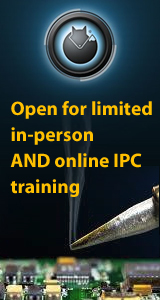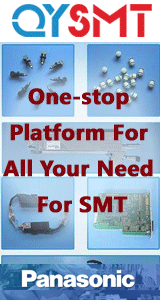The paper, titled “Strategies for Addressing White Residue and Localized Contamination,” discusses electrochemical migration, an occurrence of a conductive metal bridge forming between conductors when they are subjected to a DC voltage bias. Metal conductors grow from a positively charged conductor (cathode) to a negatively charged adjacent conductor (anode), creating a short circuit between the conductors. Electrochemical migration consists of metals plating in reverse.
An ionic contaminant combines with water, generally forming a localized source of acid, which dissolves metal ions. Under the influence of the electrical potential, the metal ions move across the intervening space, plating out on the laminate as it goes, forming a metal filament. A more contaminated assembly has greater risk than a clean assembly.
The purpose of this research is to document the root causes that promote electrochemical migration — white residue, localized contamination, end use environment, and electric potential and strategies for addressing the problem. The discussion was well attended with more than 100 attendees filling all seats and standing in the aisles to view the presentation. Overall, the presentation was a success and very well received by the audience.
Kyzen is a leading supplier of precision cleaning chemistries to the worldwide electronics, metal finishing, medical, semiconductor, and optical industries. Founded in 1990, Kyzen offers superior cleaning chemistries, technical support, application and analytical services throughout the world. Kyzen has won numerous industry awards for their exceptional products and all products are RoHS compliant. For more information, visit http://www.kyzen.com.







